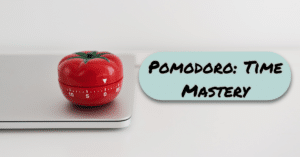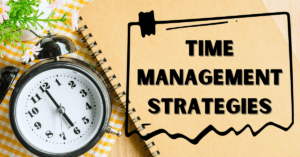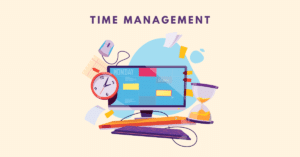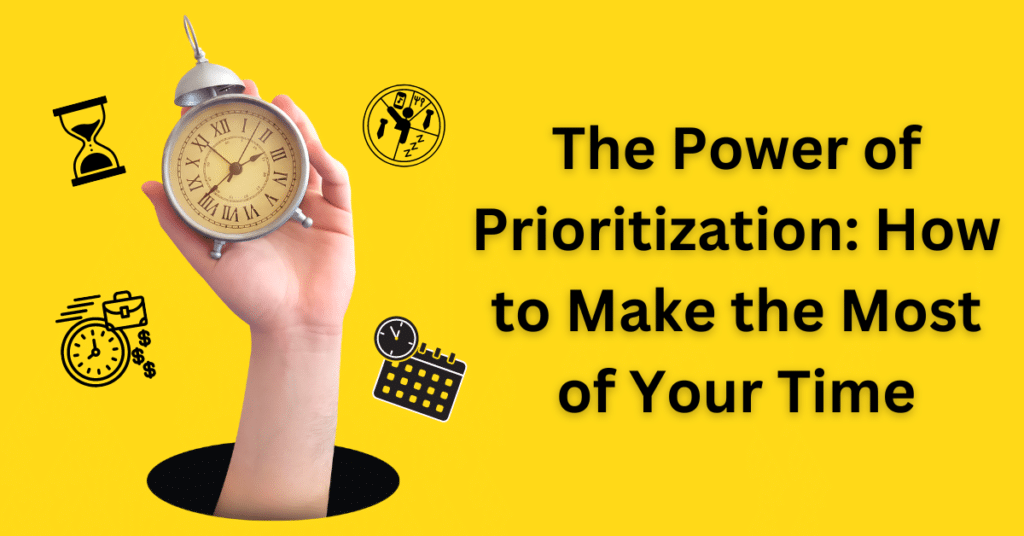In today’s fast-paced world, time is a valuable resource that often feels scarce. With numerous tasks, responsibilities, and commitments demanding our attention, it’s crucial to master the power of prioritization. Effective prioritization allows us to make the most of our time by focusing on what truly matters and achieving our goals more efficiently. By understanding the principles and techniques of prioritization, we can gain control over our daily lives, reduce stress, and maximize our productivity. In this post, we will explore the significance of prioritization in time management and delve into practical strategies to help you prioritize effectively.
Understanding the Importance of Prioritization in Time Management
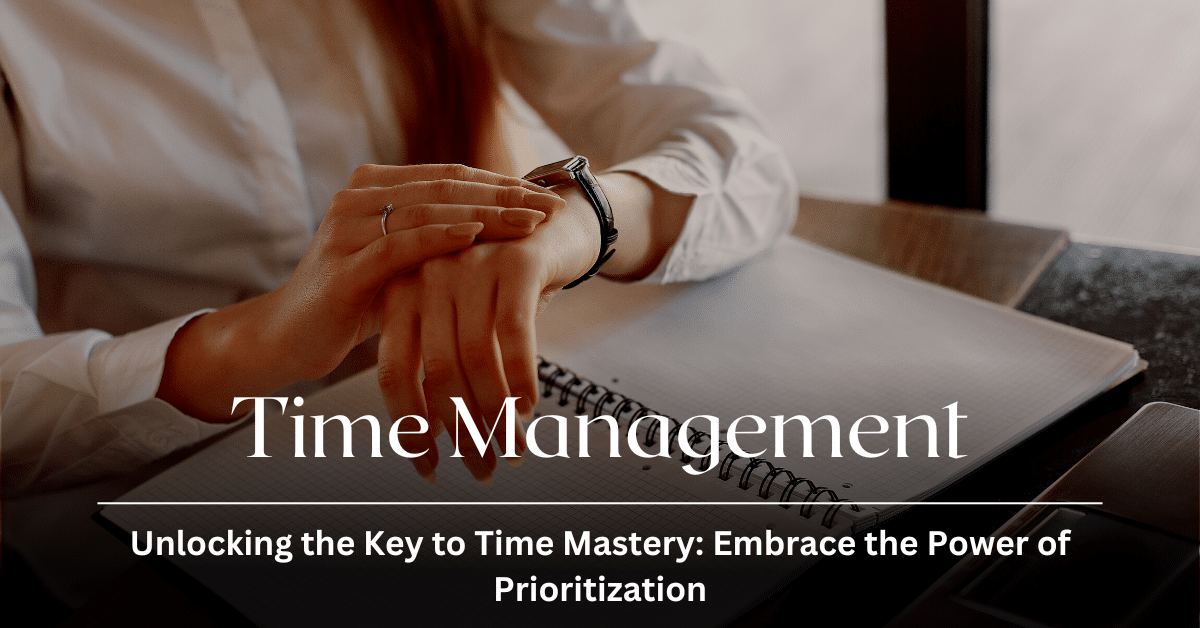
Prioritization is the cornerstone of effective time management. Without a clear understanding of what tasks are most important and deserve our attention, we can easily find ourselves overwhelmed and scattered. When we prioritize, we make deliberate choices about where to invest our time and energy, ensuring that we focus on the activities that align with our goals and values. By giving priority to the tasks that have the greatest impact or contribute directly to our objectives, we can make significant progress and avoid getting caught up in trivial or low-value activities. Prioritization empowers us to make conscious decisions about how we allocate our time, enabling us to work efficiently, achieve our desired outcomes, and maintain a healthy work-life balance.
Identifying Your Priorities: Steps to Streamline Your Tasks
Identifying priorities streamlines tasks and optimizes time management. Start by clarifying goals and values, breaking priorities into actionable tasks. Evaluate urgency and importance, categorizing tasks into high, medium, and low priorities. Focus on high-priority tasks to dedicate energy effectively. Regularly reassess to stay aligned with changing needs. By identifying and streamlining priorities, work efficiently, achieve results, and find fulfillment in daily pursuits.

Reflect on Your Values and Long-Term Goals
When identifying your priorities, it’s essential to take a step back and reflect on your values and long-term goals. Consider what truly matters to you in life, both personally and professionally. Ask yourself questions such as: What are my core values? What are my aspirations and dreams? By aligning your priorities with your values and long-term goals, you can ensure that your efforts are directed toward what truly matters to you. Reflective exercises such as journaling or meditation can help gain clarity about your values and long-term aspirations.
Breaking Down Priorities into Actionable Tasks
Once you have a clear sense of your priorities, breaking them down into actionable tasks is important. Start by listing all the tasks associated with each priority. Then, consider the specific steps required to accomplish each task. Breaking down priorities into smaller, actionable tasks makes them more manageable and less overwhelming. Use bullet points to outline the specific actions needed for each task. This way, you can see what needs to be done and create a roadmap for yourself.
Evaluating Urgency and Importance: Assessing Task Priority Levels
To effectively prioritize your tasks, it’s crucial to evaluate their urgency and importance. Urgency refers to the time-sensitivity of a task, while importance relates to its significance and impact on your goals. One effective method for assessing task priority levels is using a prioritization matrix or a table. Create a table with two columns: Urgency and Importance. Assign each task a value, such as high, medium, or low, for both urgency and importance. This will help you visually assess the priority level of each task and determine where to allocate your time and resources most effectively. Remember to regularly review and adjust the priority levels as needed, based on changing circumstances and new information.
Effective Techniques for Prioritizing Your To-Do List
When it comes to managing your to-do list, prioritization is the key to staying focused and achieving your goals. However, it’s not always easy to determine which tasks deserve your immediate attention. Fortunately, there are several effective techniques you can employ to prioritize your to-do list effectively. One popular method is the ABCD method, where you assign each task a letter from A to D based on its importance and urgency. Another useful technique is the 80/20 rule, also known as the Pareto Principle, which suggests that 80% of your results come from 20% of your efforts. By identifying the tasks that fall within that critical 20%, you can prioritize them accordingly. Additionally, using a priority matrix, such as the Eisenhower Matrix, can help you categorize tasks based on their urgency and importance, allowing you to allocate your time and energy more efficiently. By implementing these techniques and finding the approach that works best for you, you can enhance your productivity, reduce stress, and accomplish your tasks with greater ease.
Here’s a table to help prioritize tasks using the Eisenhower Matrix:
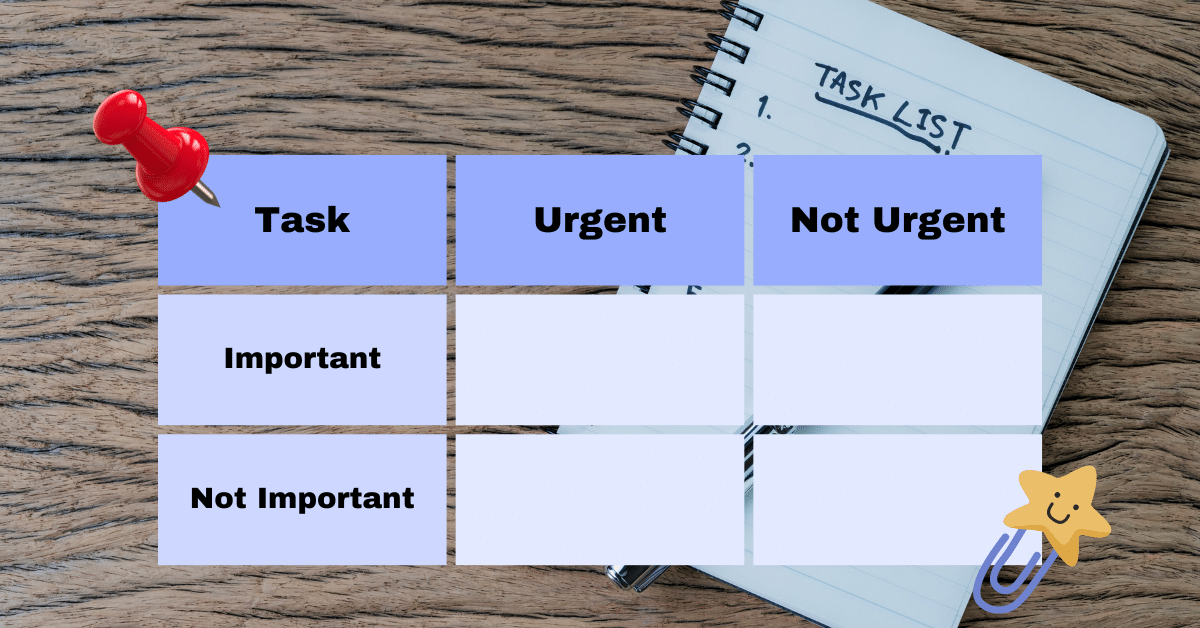
In the table, you can list your tasks under the appropriate categories: “Important” or “Not Important” on the vertical axis, and “Urgent” or “Not Urgent” on the horizontal axis. Assign each task to the corresponding cell based on its urgency and importance. This matrix will help you visually identify the tasks that are both important and urgent (top-left cell), allowing you to tackle them first. It also helps highlight tasks that may be less crucial, enabling you to decide whether to delegate, defer, or eliminate them (bottom-right cell).
Time vs. Value: Making Smart Choices with Prioritization
In time management, balancing time and value is crucial. Prioritization optimizes our use of time and maximizes value. Evaluate task potential, considering long-term benefits, goal alignment, and return on investment. Focus on high-value activities for success and well-being. Mindful prioritization balances effective time management and valuable engagement.

Tips for Staying Focused on Your Priorities and Avoiding Distractions
Staying focused on our priorities is essential for effective time management and accomplishing our goals. However, in today’s fast-paced and digitally connected world, distractions can easily derail our focus. To stay on track, it’s important to implement strategies that help us avoid distractions and maintain our attention on what truly matters. One effective tip is to create a dedicated workspace or environment that minimizes potential distractions. This could involve turning off notifications, closing unnecessary tabs or apps, and establishing clear boundaries with colleagues or family members. Practicing time-blocking involves allocating focused work blocks to prioritize tasks and eliminate interruptions. Cultivating mindfulness through techniques like deep breathing or meditation enhances presence and reduces distractions. Implementing these tips helps maintain focus, boosts productivity, and ensures priority attention.
- Create a designated workspace that is free from distractions.
- Turn off notifications on your phone or computer to minimize interruptions.
- Close unnecessary tabs or applications on your device to eliminate potential distractions.
- Set clear boundaries with colleagues or family members to ensure uninterrupted focus time.
- Practice time-blocking by scheduling specific blocks of time for focused work on your priorities.
- Use productivity tools or apps that can help you stay organized and minimize distractions.
- Prioritize tasks and tackle them one at a time, avoiding multitasking that can lead to distraction.
- Take regular breaks to recharge and rejuvenate, but use timers or reminders to ensure they don’t become excessive.
- Practice mindfulness techniques such as deep breathing or meditation to enhance your ability to stay present and resist distractions.
- Establish a routine or daily schedule that includes dedicated time for priority tasks, making it a habit to focus on them consistently.
Remember, everyone’s preferences and working styles may vary, so it’s essential to experiment with these tips and find the strategies that work best for you in staying focused and avoiding distractions.
Creating an Optimal Work Environment: Minimizing Distractions
Designing an optimal work environment is crucial for staying focused on your priorities and avoiding distractions. Start by finding a dedicated space that is conducive to your work. Clear away clutter and create an organized workspace that promotes productivity. Minimize visual distractions by keeping only essential items within your line of sight. Consider noise-canceling headphones or ambient background music to block out external sounds that can disrupt your concentration. Additionally, set boundaries with others in your household or workplace, communicating the need for uninterrupted focus during specific times. If possible, establish a physical barrier or use visual cues, such as a closed door or a “do not disturb” sign, to signal your unavailability. By creating an optimal work environment that minimizes distractions, you can enhance your focus, productivity, and ability to prioritize effectively.
Mastering the Art of Time Blocking: Maximizing Focus on Priorities
Time blocking is a powerful technique that can help you stay focused on your priorities and make the most of your time. With time blocking, you allocate specific blocks of time on your schedule for dedicated work on specific tasks or priorities. Start by identifying your most important and high-value tasks, and then assign them dedicated time slots in your calendar. During these time blocks, eliminate distractions, silence notifications, and fully immerse yourself in the task at hand. By devoting uninterrupted focus to your priorities, you can enhance your productivity and achieve greater results. Time blocking also helps you gain a realistic understanding of how long tasks take and allows you to manage your time more effectively. With consistent practice and refinement, mastering the art of time blocking will enable you to optimize your schedule, maintain focus on your priorities, and accomplish more in less time.
Harnessing the Power of Deep Work: Creating a Distraction-Free Zone
Incorporating the practice of deep work can significantly help you stay focused on your priorities and avoid distractions. Deep work involves dedicating uninterrupted, concentrated time to engage in cognitively demanding tasks. To create a distraction-free zone for deep work, consider the following tips:
- Find a quiet and secluded space where you can work without interruptions.
- Eliminate potential distractions by turning off notifications on your devices.
- Establish clear boundaries with others, communicating your need for uninterrupted focus during specific periods.
- Use time management techniques, such as the Pomodoro Technique, to structure your deep work sessions in manageable increments.
- Prioritize your most important tasks during your deep work sessions to make the most of your focused and undistracted time.
By implementing these strategies and embracing deep work, you can cultivate a more focused and productive mindset, enabling you to prioritize effectively and accomplish your goals with greater efficiency.
In Conclusion
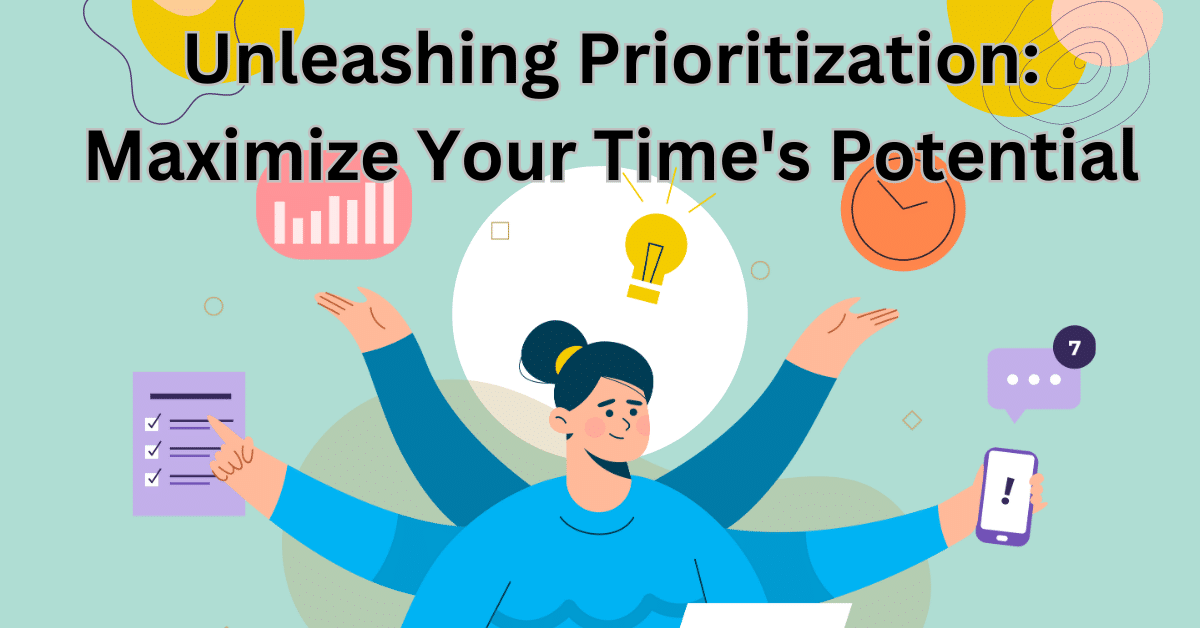
Prioritization is the key to optimizing our time and achieving greater productivity. By consciously identifying and organizing our tasks based on their importance and urgency, we can make better use of our limited time resources. This post has explored the power of prioritization and provided actionable strategies to help you prioritize effectively. By understanding the significance of prioritization, learning practical techniques such as the Eisenhower Matrix, leveraging technology tools, and setting boundaries, you can streamline your tasks, stay focused on your priorities, and ultimately make the most of your time. With a clear understanding of what truly matters, you’ll be better equipped to navigate the demands of daily life, reduce stress, and accomplish your goals more efficiently.

